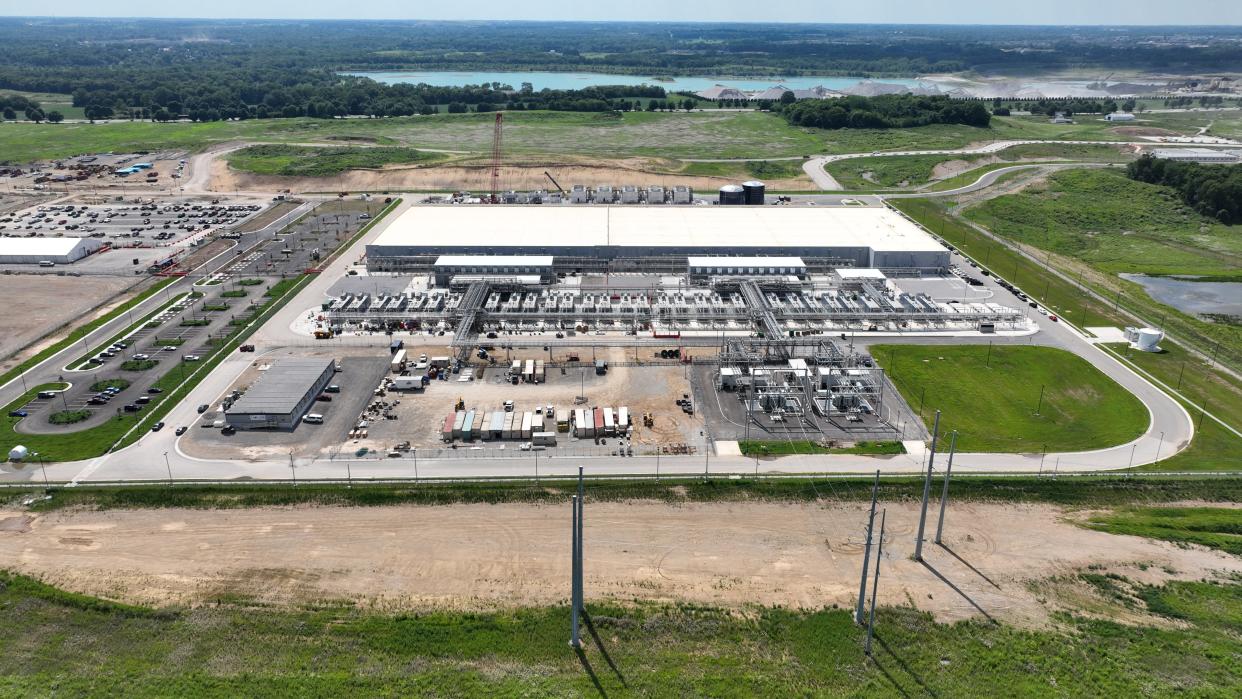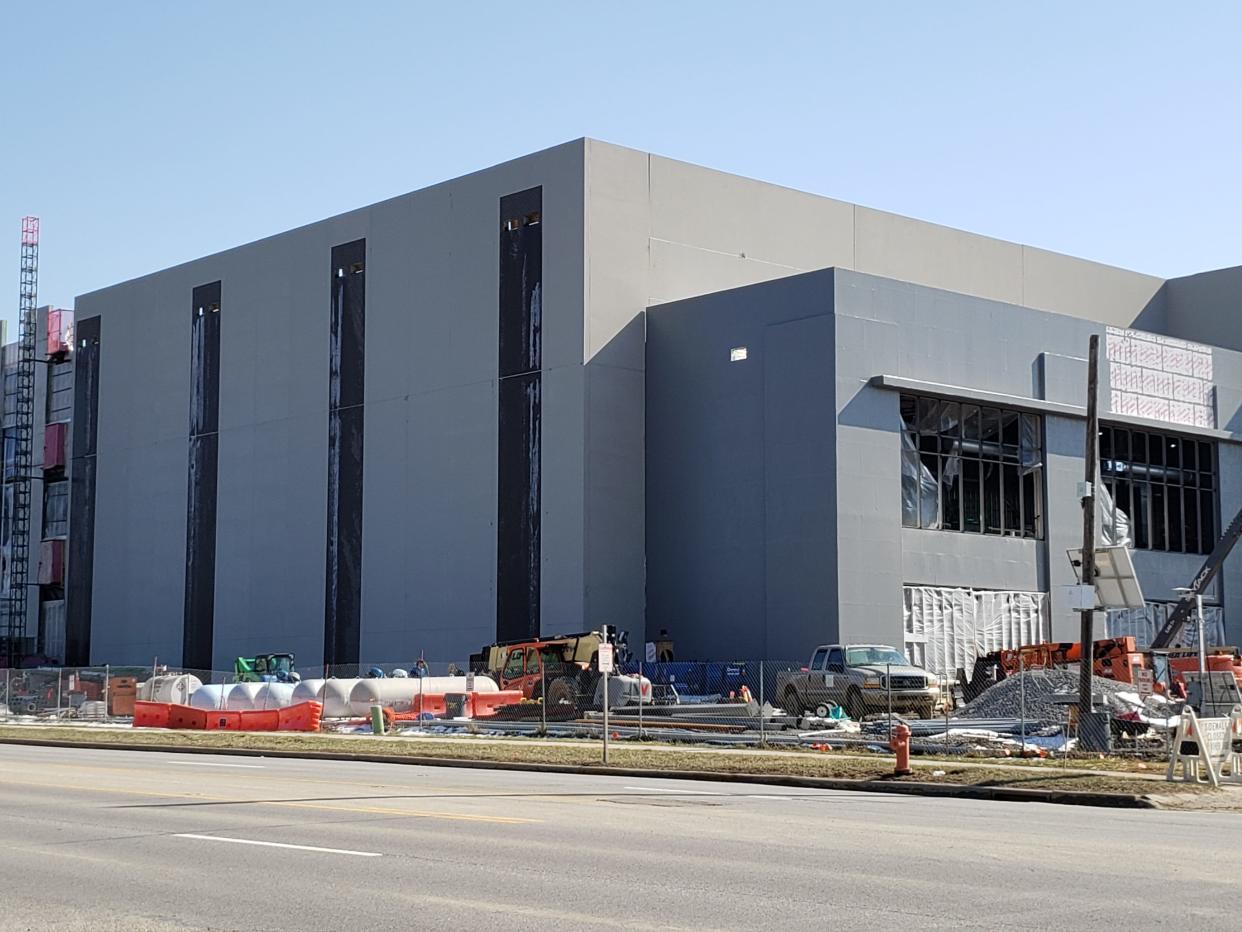Data center growth expands across Columbus region, state as electricity concerns rise
Amazon's selection of Pickaway County as a potential site for a data center campus is showing that communities don't have to be a tech hub to land an investment that could be worth billions of dollars.
Driven by the need for vast amounts of electricity to store growing amounts of data along with powering the complex, energy-sucking demands of artificial intelligence, data center operators are scouring for sites throughout Ohio and the Midwest.
The data center wave that began nearly a decade ago in central Ohio has largely focused on New Albany, where Amazon, Google, Facebook parent Meta and other companies have located.

Several additional projects are underway, and Amazon said last year it will spend another $3.5 billion in New Albany to build five more data centers as part of a $7.8 billion investment in the region, the second-biggest investment in the state after Intel's $28 billion project in Licking County.
But in the past couple of years, companies have begun looking elsewhere.
More: AEP Ohio predicts power demands to double around Columbus, driven by data center needs
"It’s a more dynamic, wide-ranging story than it was a few years ago," said Jacob Albers, head of alternatives insight for Cushman & Wakefield, a commercial real estate company that studies data centers.
Google built data centers in Lancaster and on the South Side of Columbus, for example.
Outside of central Ohio, Aligned Data Centers bought a 129-acre lot in Sandusky for the development of a new data center campus. A General Motors plant used to be on the site.
Now Amazon has set its sights on a 234-acre chunk of land along state Route 104 that it bought for $49.1 million, according to Pickaway County property records.

"It's like any county in Ohio is under potential evaluation. Any county in adjacent states is under evaluation," Albers said.
"It's been the case for a while. They continue to look for appropriate sites in the region," said Kenny McDonald, president and CEO of the Columbus Partnership, a civic and business organization made up of the region's CEOs.
“We are constantly evaluating new locations based on customer demand. We recently purchased land in Pickaway County and are performing due diligence in exploring possible data center locations," said Amazon, which also has data centers in Hilliard and Dublin.
Electricity, electricity, electricity
For years, central Ohio has been pitched as a great site for data centers — plenty of affordable land, few natural disasters, a smart workforce and ample supplies of affordable electricity.
That has made the region a hub for cloud computing, offering fiber networks that reach major cities on the East and West coasts, according to companies that have developed data centers.
"It was a market that was fairly ideal for data center growth. Interest started several years ago, and it’s only picked up," Albers said.
The assumption always has been that there will be an appropriate amount of power available and on anyone's construction schedule, McDonald said.
"We can't take for granted that the amount of power being used in these cloud centers is just going to be there," he added.
Any particular piece of property being considered for a data center requires long-term planning to make sure there's adequate amounts of power available and the transmission lines to get the power to the site, he said.
Albers said there have been anecdotal reports of projects being pushed off in the future in the region because of a lack of availability of power.
Meanwhile, some companies are helping drive renewable energy projects to help generate the electricity needed to run their data centers.
Amazon, for example, is buying the power from 17 solar farms in the state and one of Ohio's 11 wind farms to help run its operations.
The e-commerce giant says it has been the largest corporate buyer of renewable energy for each of the past three years, with more than 400 projects around the world.
Artificial intelligence pushing up demand for data centers, electricity
Data centers are basically warehouses filled with rows and rows of computer equipment that hold and run everything we do online.
"For some time, data centers have become critical in everyone's lives," McDonald said.
Increasingly though it is artificial intelligence that is driving the demand for more data centers and growing amounts of electricity to run them.
"It's no longer just an interesting side note to our economy but an integral part of running everybody's business," McDonald said.
Some applications such as ChatGPT require far more power to run than routine searches, McDonald said
The increase in data centers coincides with a sales tax exemption for equipment used in data centers put in by the state. The state offers the incentive to projects that have an investment of at least $100 million in a three-year period and annual payroll of at least $1.5 million.
Use of the exemption continues to grow. The state is forecasting that the tax break will cost the state $127.4 million in lost revenue in the next fiscal year that begins July 1, up nearly $5 million from the current fiscal year.
Availability of electricity in New Albany a problem? Or not?
A recent Cushman & Wakefield report said supplies of electricity in New Albany for data centers are becoming tighter.
"As with many other markets, power availability is becoming a growing constraint in the New Albany cluster," the report said. "Power delivery times are increasingly several years away, incentivizing operators to search for available sites farther from the development frenzy."
New Albany spokesman Josh Poland disputed that there is a problem. He and the report noted multiple data center projects in various levels of development in New Albany.
"We haven't felt any impact of electricity being an issue," he said.
The federal government's most recent short-term energy forecast is calling for a 2% increase in electricity consumption this year by commercial and industrial customers, but that demand will vary in various parts of the U.S.
"Areas of the country with concentrations of new large computing customers, such as data centers, have the fastest forecast growth in total non-residential electricity consumption," the report said.
American Electric Power said data center growth is driving up demand for power in central Ohio, with total demand expected to double between 2018 and 2028.
"Data centers are quickly using up the available capacity of the electric grid in central Ohio," the company said. "We are working to build new infrastructure to add capacity, but this process will take time. For now, we are carefully managing electric demand on our lines and equipment, and power usage from data centers does not pose a threat to the electric grid in central Ohio."
mawilliams@dispatch.com
@BizMarkWilliams
This article originally appeared on The Columbus Dispatch: Columbus data center growth could slow over electricity concerns
